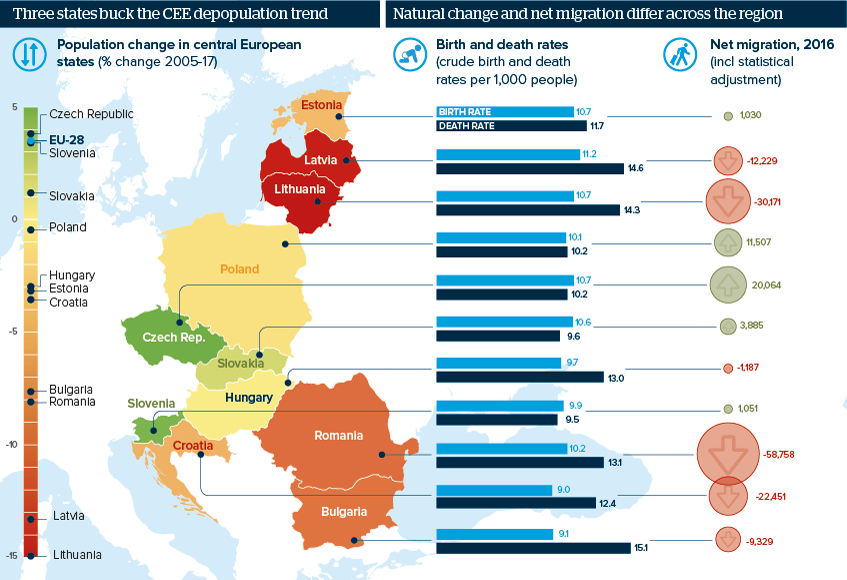Czech population will rise as others in region fall
CEE is notoriously depopulated, particularly by emigration, but the most successful transition states buck that trend
Source: Eurostat
Outlook
The Czech population will rise, from 10.5m in 2015 to 10.7m in 2030, declining thereafter, according to Eurostat projections. It will grow in 15 other EU member-states, but fall in most of Central-Eastern Europe (CEE), Italy, Greece and Portugal. Population is a balance of births, deaths, immigration and emigration; these factors’ drivers are complex, but optimism and acceptance of immigration play a part.
The post-1989 transition was unsettling, upending social and economic structures. The Czech Republic (which in 2008 switched from receiving EBRD finance to contributing), Slovenia and Slovakia are the most successful in exiting transition; Croatia, Romania and Bulgaria have resisted reform and so are the laggards.
Impacts
- The Czech population annual growth rate of 0.3% will not correct a worsening age imbalance; the over-65 cohort increased by 3% last year.
- Emigration of predominantly younger people will reinforce population decline in CEE by reducing the birth rate.
- Suicide and a slow overall decline in mental health is a problem for CEE; worst afflicted are the Baltic states and Poland.
See also
- Eastern EU industries may falter for lack of skills - May 30, 2018
- Demographic change will put pressure on Europe - Nov 16, 2017
- More graphic analysis
